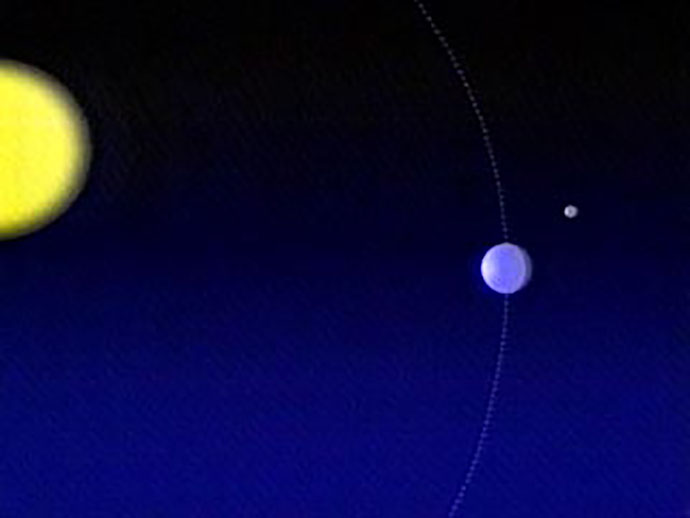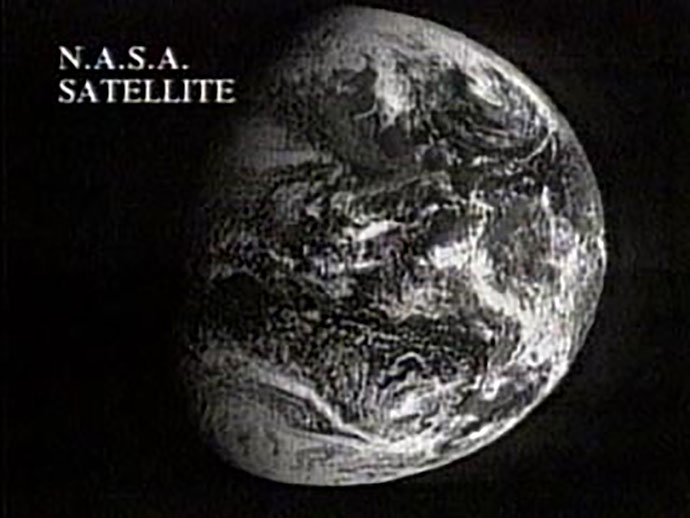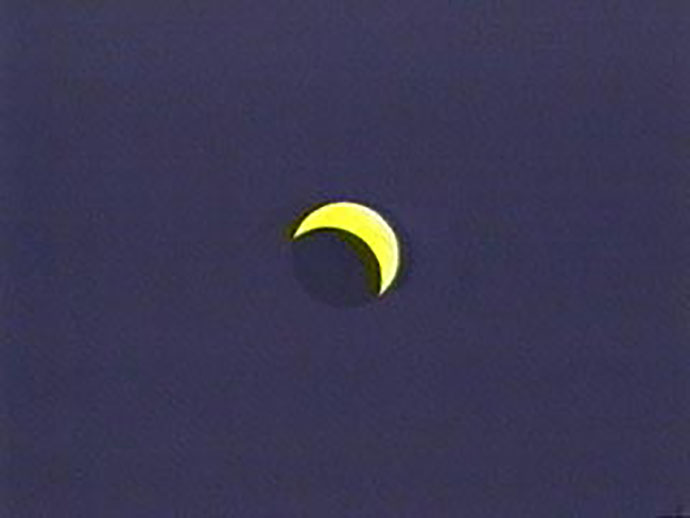PART 3
*** Brian the Astronomer ***
“So if I press this button…”
PATRICK: You know we’ve been talking about eclipses now or some time but there are some people who are not quite sure when or why or how an eclipse happens.

BRIAN: Yes – well we have a little picture by way of explanation. Here’s the Earth going around the Sun, making its journey, which it does in a year, of course, and around the Earth is going the Moon – and you can see that once a month the Moon will come roughly between the Sun and Earth, so you might expect to get a total eclipse every month.



PATRICK: Sadly we don’t.
BRIAN: But unfortunately, not. The reason being – here’s another point of view …


We’re now in the plane of the Earth’s orbit and you can see that the Moon is in various different planes throughout the year and there’s only one point where it will actually cast a shadow on the Earth, which is the eclipse condition.
PATRICK: And you want to be in that shadow.
BRIAN: We have to be in that shadow. In fact here’s a little bit more explanation. This is the classic line diagram:

– the Sun casting its light on the Moon, the Moon casting as shadow on the Earth, which is quite big as you can see, but most of that shadow is a partial shadow 0 the penumbra. And if you were standing in this large shadow area, you would see a partial eclipse of the Sun. There is one little spot right in the middle, a little black spot, you can see, which is the total eclipse position.


We have a rather nice computer simulation here. The “Starry Night” program shows what you would see if you were standing on the Moon and looking towards the Earth at this time – so if I press this button …


we can actually see the shadow of the Moon going across the Earth here, the penumbra, and right in the middle, very small, a little black dot, um, which is the total eclipse path, and we have to be standing right in the path of that little black dot.
PATRICK: That’s where you’ve got to be, well, now that of course is a computer simulation so let’s now have a look at the real thing.
BRIAN: Yes, this is quite spectacular, isn’t it? Courtesy of NASA:


– a picture from space of an actual eclipse, in fact last year’s eclipse which we viewed from the Caribbean and there’s the shadow going across the Earth. Quite amazing.

PATRICK: And yet you know, Brian, we on Earth are very lucky to have total eclipses at all.
BRIAN: Absolutely. There’s another little simulation here,



– which is what you would see if you were standing in the path of that little black dot. And here we see the Sun, which you would be looking at with protected eyes, of course, and here comes the Moon, and it just by an amazing coincidence, seems to cover exactly the right amount of Sun, which is incredible, isn’t it?
PATRICK: Sheer chance. The Sun’s diameter is 400 times that of the Moon and the Sun’s also 400 times further away, but for that, no total eclipses. We’re in an amazing coincidence.
BRIAN: Incredible – and they say there’s no coincidence in creation. Makes you wonder, doesn’t it?